In a thoughtful collection, some works hang in quiet repose, while others practically bounce off the wall (or floor, or table) to demand a reaction. For the below list of collectors, there are also a few pieces that spark debates over dinner, prompt unexpected eyebrow-raises, and linger in the mind long after the front door closes. Whether they provoke awe, laughter, discomfort (or all three at once), each reveals something about its collector’s eye—and appetite for the unforgettable. For CULTURED, 12 collectors answer the question: Which work in your home stops guests in their tracks, without fail?
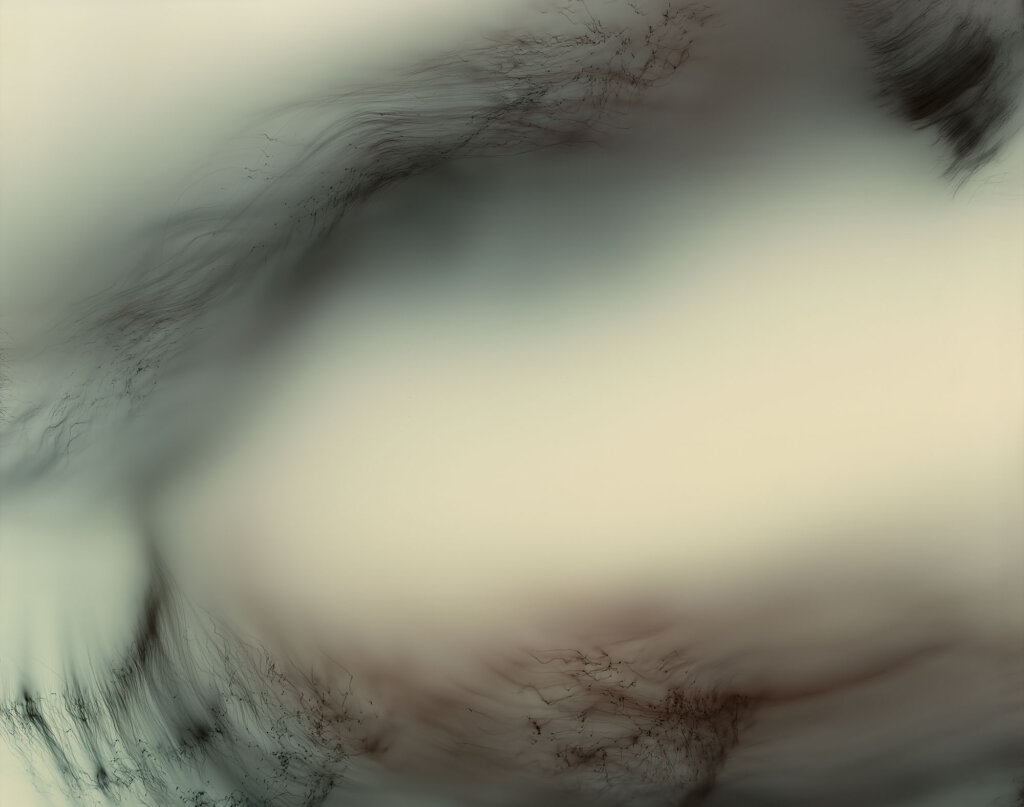
“The ‘Freischwimmer’ by Wolfgang Tillmans in our Aspen home always sparks the most discussion. It’s one of the most provocative pieces we own, precisely because it blurs the line between photography and painting. At first glance, it looks like a dreamy, abstract wave—but it’s actually a photograph created without a camera. It challenges how we define both image and meaning, inviting deep contemplation without offering a clear narrative. Visitors are often mesmerized.”
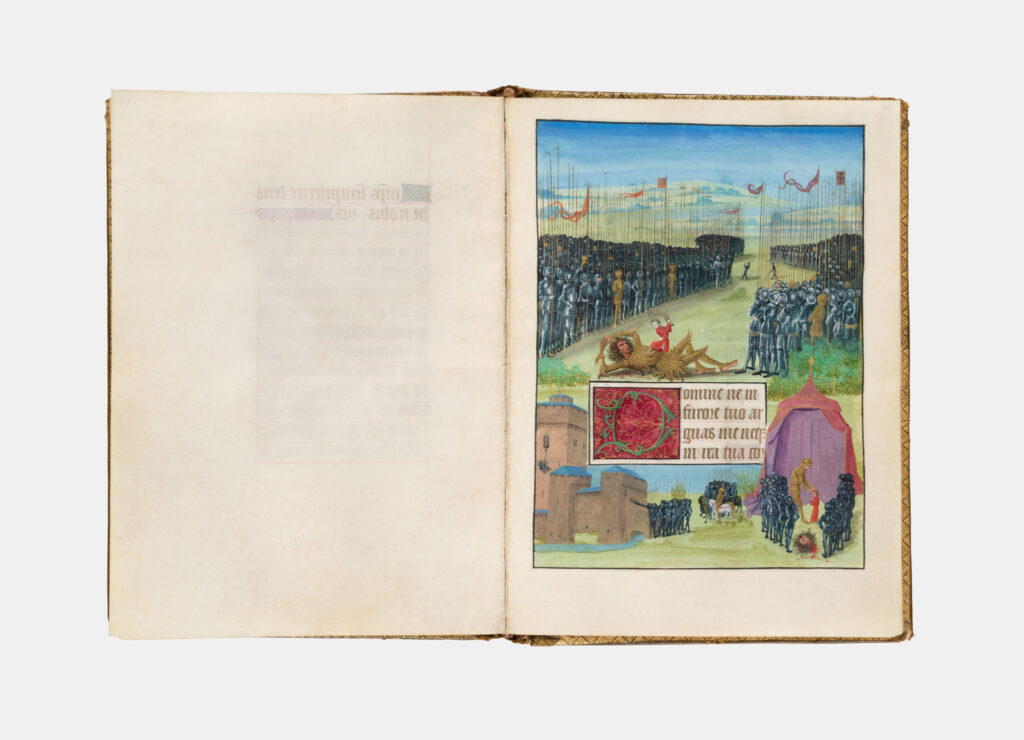
“The art that really seems to engage people at a deep level are the medieval illuminated books of hours or prayer books. I remember the feeling of complete awe and surrender when I was first allowed to hold one and turn the pages that are full of incredibly beautiful script and images. It is such a rare occurrence to feel connected to individuals that lived some 600 years ago, so to hold the same prayer book that brought solace or enchantment to its original owner helps me to understand the continuum of life and our contributions to it. I have observed that even the most jaundiced contemporary collectors succumb to the power of these handheld treasures.”
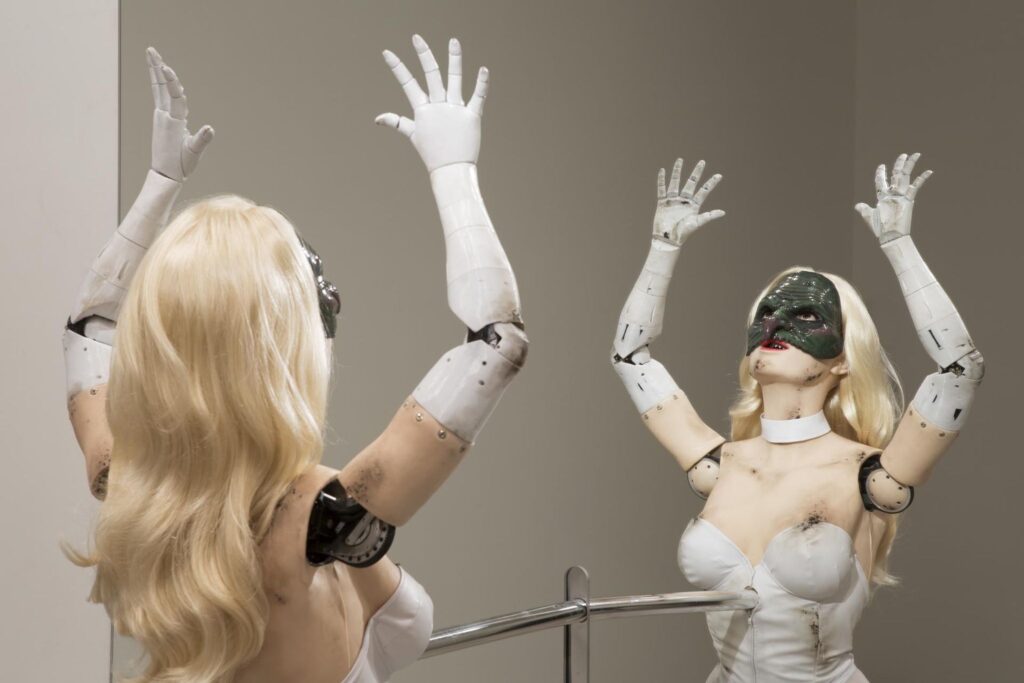
“One that always stands out is Jordan Wolfson’s (Female figure). However, as an immersive and technically complex installation, it can only be exhibited in a public space rather than in a private home. The first time I saw it, I was completely mesmerized. The way it moves, the unsettling yet hypnotic gaze, and the eerie choreography make it feel almost alive. It challenges the viewer’s perception of human interaction and artificial intelligence, creating an experience that is both captivating and unsettling. Visitors are often fascinated and disturbed in equal measure, which, to me, is a sign of truly powerful art.”
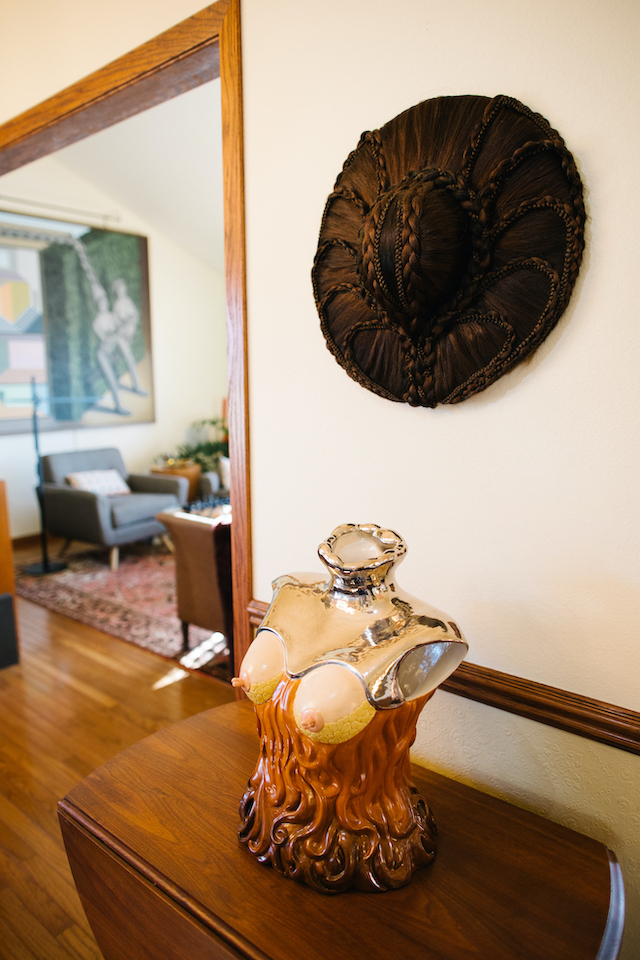
“That would have to be Spider, a sculpture by Julie Curtiss. It’s a wall-mounted piece asking the question: When is a hat not just a hat? This particular chapeau is covered in hair, with intricate braiding evocative of elongated spider legs and swaths of lighter and darker strands implying an arachnid abdomen. The entendres more than double with references to female beauty, anatomy, childbirth, phobia, and even science fiction. Essentially, what was implied in Méret Oppenheim’s tea set becomes humorously explicit in Julie’s sculpture. As one of our friends in Minot somewhat sarcastically said, ‘I love your art, but I shudder at that hat.’”
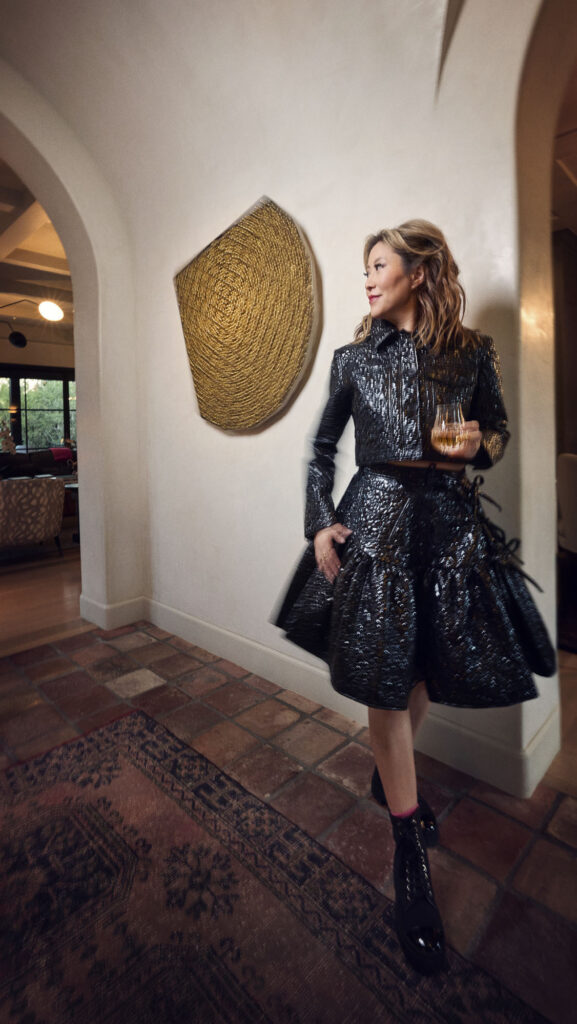
“Haegue Yang’s kinetic sculpture made of small bells arranged in a triangular form. It hangs near the entrance of my home. Guests are often surprised when invited to touch and spin the work, setting the bells in a reverberating symphony. It serves as a welcoming ritual of sorts in my home. Kids are especially delighted to “play” with the work.”
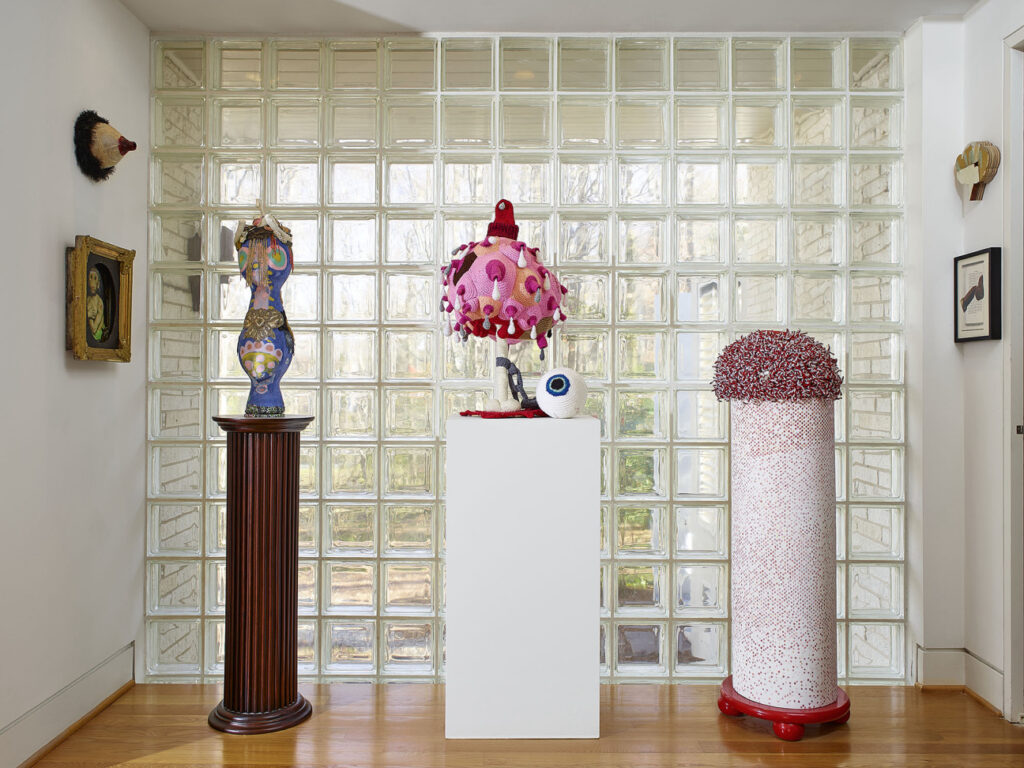
“What surprises people the most is how many images of breasts I have! To me, the breasts aren’t sexual but are symbols of nurture. That’s the most important theme in both my collecting and my own work. We all need nurture. Whether we are young or old, female or male, we all need care and somebody to believe in us.”
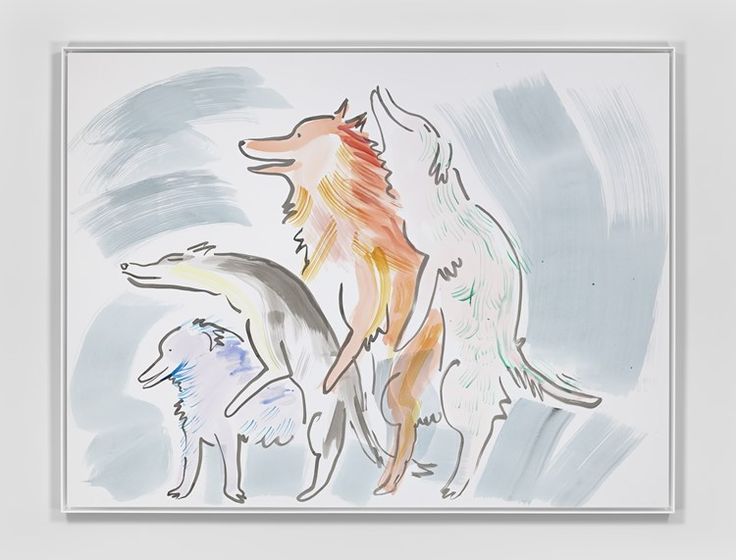
“Probably the Camille Henrot watercolor of three dogs humping each other in my powder room. It’s a guaranteed conversation starter at a dinner party and always gets a laugh, especially when I ask guests what they would title this ménage-à-paw. (Top answer: ‘The Trickle-Down Effect.’)”
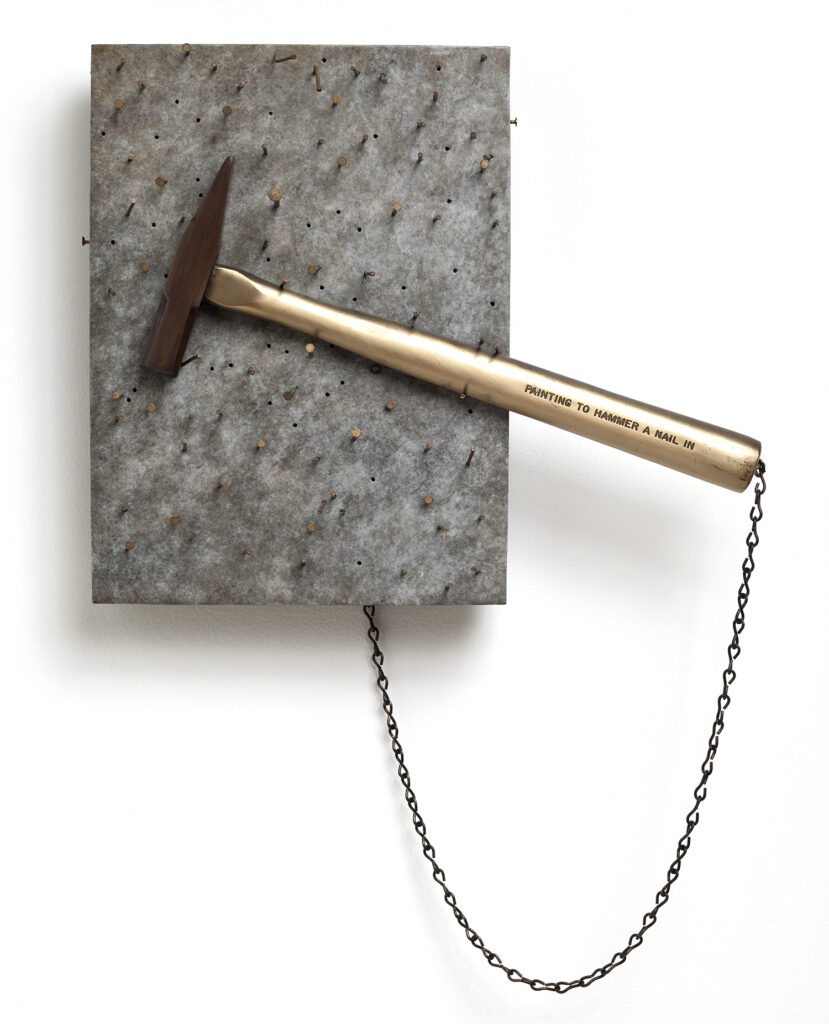
“Yoko Ono’s Painting to Hammer a Nail In (Bronze Age). The original work is an example of her groundbreaking participatory art. It is important to me to support overlooked voices and to recognize artists who are forging new paths, both historically and in the present day.”
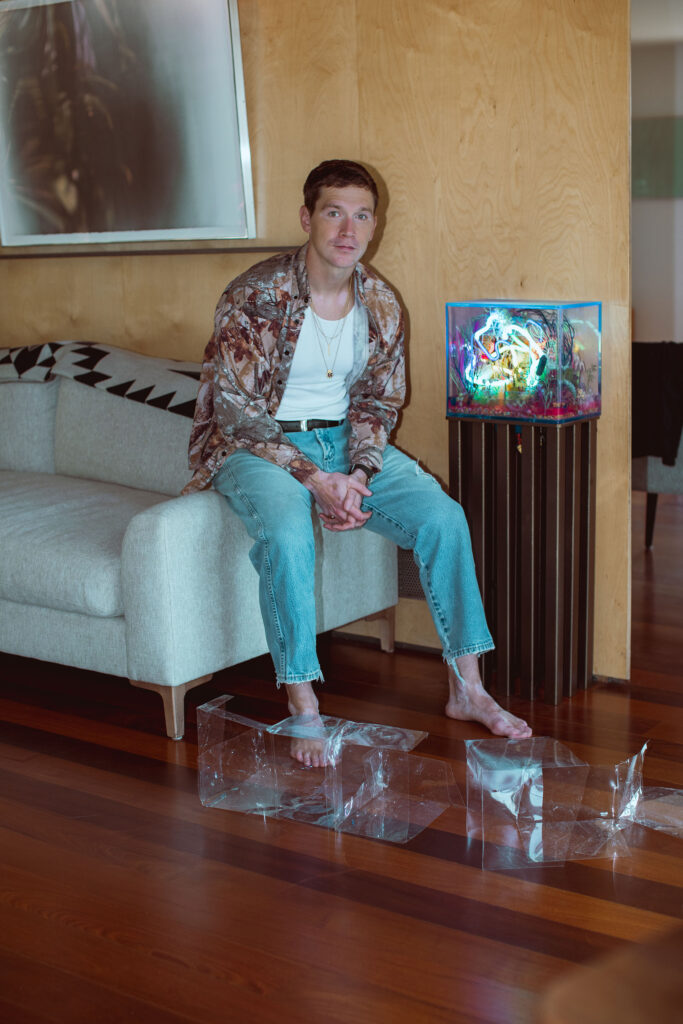
“I have to go with the fluorescent glass vitrine by Max Hooper Schneider. Max’s work universally inspires conversation from people, whether they love or despise it. I happen to be a massive fan of his, and it’s been fun to share his art with those in my life who have no connection to the art world. He is a wonderful gateway.”
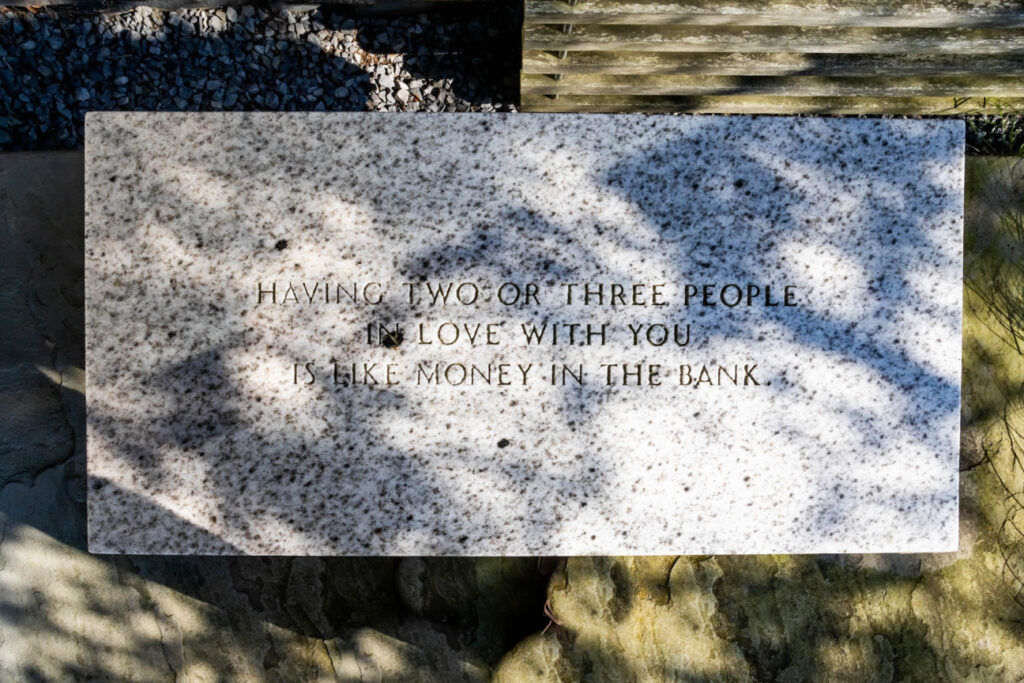
“A Jenny Holzer granite bench greets guests at our front door with the phrase ‘HAVING TWO OR THREE PEOPLE IN LOVE WITH YOU IS LIKE MONEY IN THE BANK’ carved on the seat. The phrase, from Holzer’s ‘Living’ series, sets a tone of comfort for us when we walk in the door. As you climb the stairs to the living room, you see the Sagaponack dunes stretched in front of you through the tall glass windows. Soon after, your view turns to a large Cape Cod dunescape in acrylic on canvas—Passing Time, 2000, by Jack Pierson—mirroring the nature in the background.”










 in your life?
in your life?

